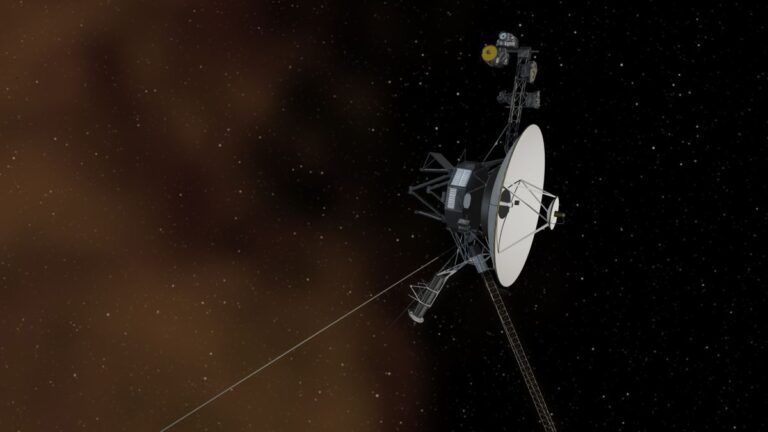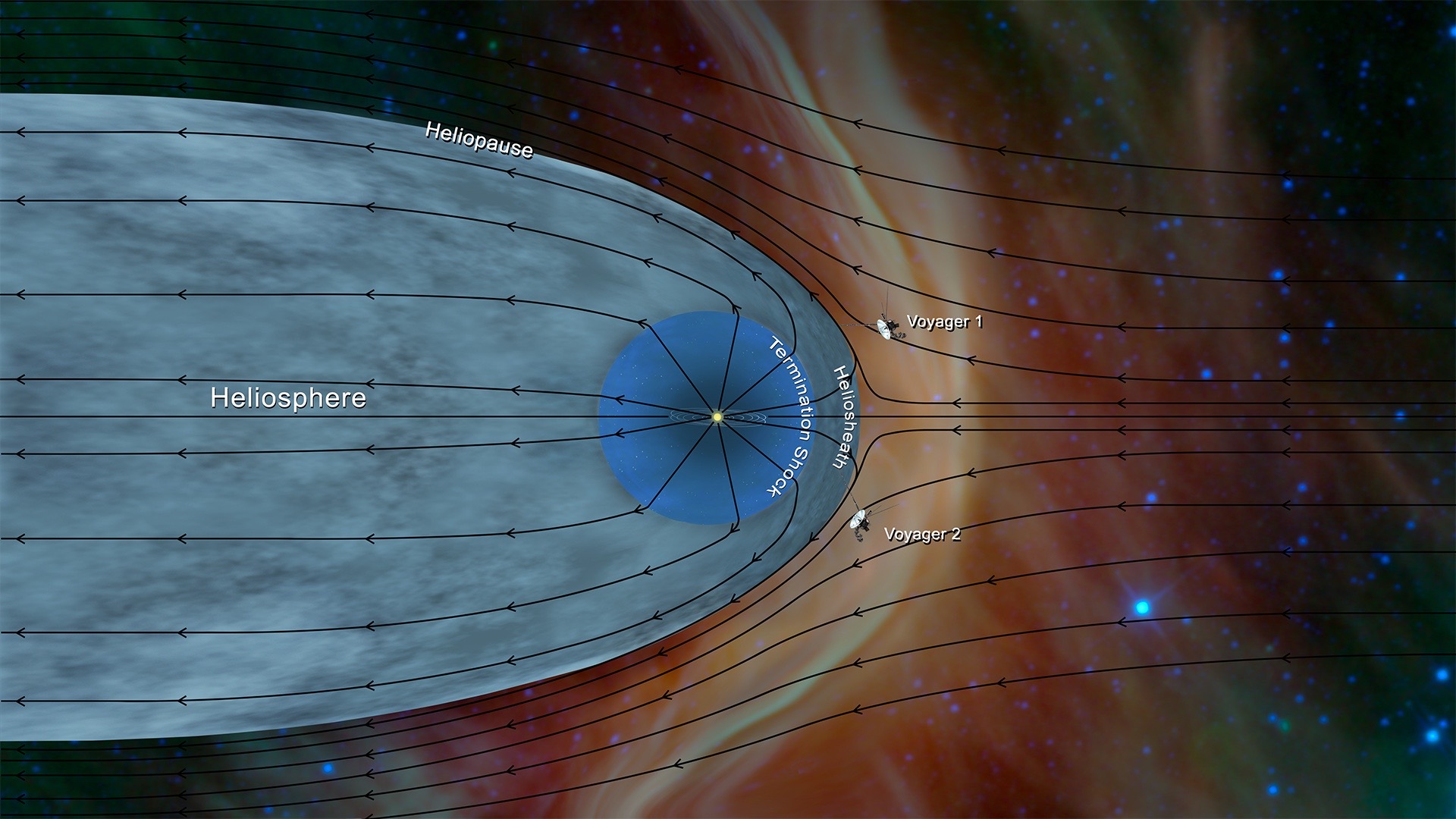
[ad_1]
NASA’s Voyager 2 spacecraft is alone drifting through interstellar space after a communications breakdown left it unable to receive commands or transmit data back to Earth.
Communications with Voyager 2, which is currently around 12.4 billion miles (19.9 billion kilometers) from Earth, were severed as a result of planned commands. These commands rotated the spacecraft’s antenna two degrees away from our planet, enough to cut its links to the ground antennas of NASA’s Deep Space Network (DSN).
As a result, Voyager 2 is no longer sending data back to the DSN, and mission control on Earth can’t send any commands back to the interstellar spacecraft.
Not all is lost, however. Voyager 2, launched in 1977, is programmed to reset its orientation several times a year to keep its antenna directed at Earth. Another reset is scheduled for Oct. 15 this year, and this should result in Voyager 2 resuming contact with its ground control. Until that time, operators expect the spacecraft to stick to its planned trajectory.
Related: NASA Voyager 2 spacecraft extends its interstellar science mission for 3 more years

Voyager 2 was launched from Launch Complex 41 at Cape Canaveral, Florida, on August 20, 1977. It made history on Dec. 10, 2018, when it became the second spacecraft to leave the solar system and enter interstellar space.
Six years prior to this, its sister craft Voyager 1 became the first man-made craft to journey beyond the influence of our star, the sun. Voyager 1 is currently around 15 billion miles (24 billion km) from Earth and remains in contact with our planet.
Both Voyager 1 and 2 were designed to find and study objects at the edge of the solar system, according to NASA. In the course of doing this, Voyager 2 has been responsible for a number of scientific firsts. It is the only spacecraft that has conducted close-up studies of all four giant planets of the solar system — the gas giants Jupiter and Saturn and the ice giants Neptune and Uranus.
In Jan. 1986, Voyager 2 became the first human-made object to fly past Uranus. During that trip, Voyager 2 discovered 10 new moons and two new rings around the ice giant. In Aug. 1989, it also became the first spacecraft to buzz past Neptune, and while there, it discovered five moons and four rings. While studying Neptune, Voyager 2 also discovered an 8,100-mile by 4,100-mile (13,036 km by 6,600 km) cyclonic storm with winds of up to 1,300 miles per hour (2,092 km/h) raging on the ice giant, which has been dubbed the Great Dark Spot.
In April 2023, NASA announced that Voyager 2 would postpone a planned instrument shutdown by at least three years, continuing to gather valuable deep space data until at least 2026.
“We are definitely interested in keeping as many science instruments operating as long as possible,” Voyager project scientist at NASA’s Jet Propulsion Laboratory in southern California, Linda Spilker, said in a statement issued on Wednesday, April 26.
[ad_2]